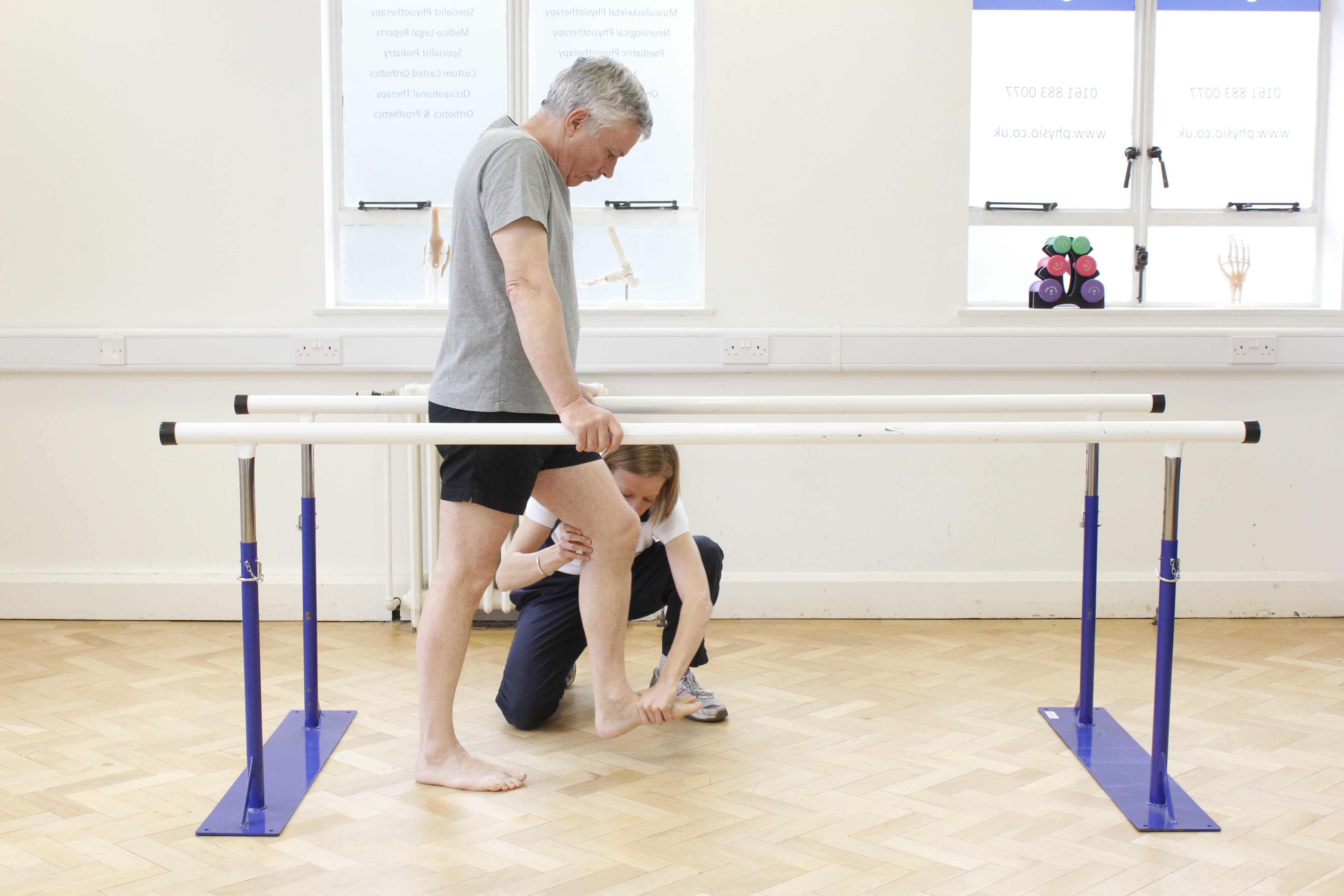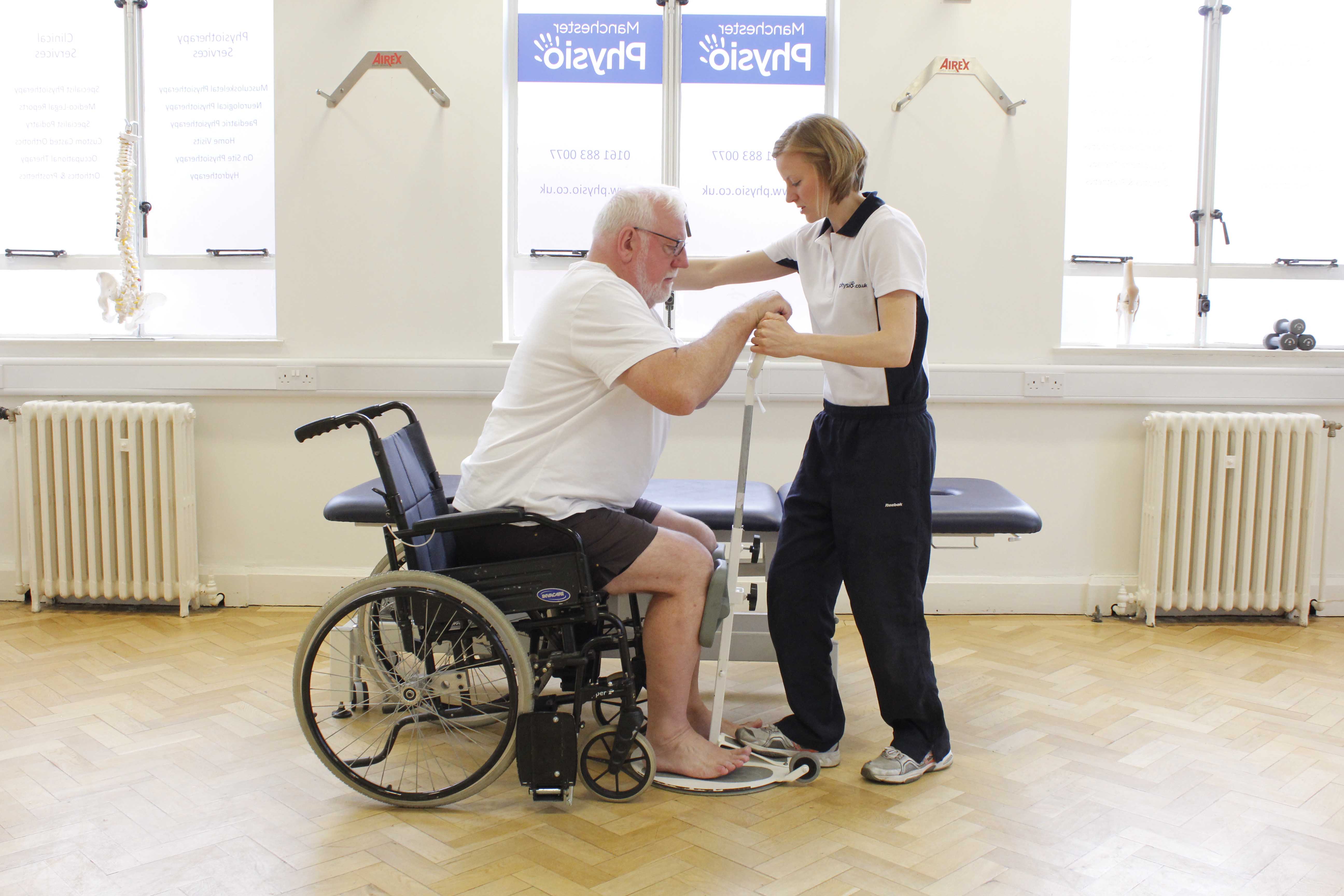Causes of Late Onset Tay-Sachs disease
Late Onset Tay-Sachs is the rarest genetic disease that appears in people aged between 15 and 35 years and occurs when fatty compounds, called gangliosides, do not break down normally because the body produces too little of the enzyme Hex A. A build-up of gangliosides accumulates and damages brain and nerve cells, which affects a person's cognitive and physical function.
 Above: Neurological physiotherapist assisting mobilisation exercises between the parallel bars
Above: Neurological physiotherapist assisting mobilisation exercises between the parallel barsDiagnosis of Late Onset Tay-Sachs disease
Diagnosis of Late Onset Tay-Sachs disease is often difficult as the symptoms of the condition are often similar to other muscular or neurological disorders. Accurate diagnosis can be made through enzyme assay and DNA analysis.
What are the symptoms/effects of Late Onset Tay-Sachs disease?
Symptoms begin between adolescence and mid-30s and vary from person to person but may include:
- Proximal (trunk) muscle weakness
- Tremor
- Unsteady gait
- Ataxia(lack of coordination)
- Muscle cramps
- Fasiculations (muscle twitching)
- Dysarthria (difficulty speaking)
- Mood changes
 Above: Neurological physiotherapist assisting mobility transfers using a pivot standing frame
Above: Neurological physiotherapist assisting mobility transfers using a pivot standing framePhysiotherapy for Late Onset Tay-Sachs (LOTS)
At Physio.co.uk we provide specialised and individualised physiotherapy treatment for people with Late Onset Tay-Sachs. Our physiotherapists at Physio.co.uk understand that difficulty with mobility and self care can have a significant impact on you and those close to you.
Your physiotherapist at Physio.co.uk will initially assess your movement, muscle strength and gait to see how we can help maximise your potential. Physiotherapy treatment at Physio.co.uk will focus on:
- Maximising muscle strength in the trunk making it easier for you to stand, get out of bed and balance whilst dressing
- Maintaining joint range of movement and flexibility for as long as possible
- Maximising mobility and gait pattern
- Maximise balance in static and dynamic positions
- Maximise fitness levels and endurance
- Improving postural stability in the trunk through passive and active movement
- Muscle strength training
- Activities to increase confidence when moving
- Structured exercise programme to increase fitness levels and reduce muscle wasting
- Pacing techniques to avoid fatigue
- Advice about orthotic devices and walking aids if appropriate

 0330 088 7800
0330 088 7800


































